DT Swiss has entered the anti-kickback chat with their all-new DEG DF – probably the simplest, lightest, and easiest solution to isolate suspension movement from chain tension and feedback at your pedals. Unlike spider-based anti-kickback systems, or even other hub-based solutions, the DT DF system is designed to drop into the wheelset you already have on your bike – offering easily adjustable isolation angles. You see, it’s literally just a new star ratchet and ratchet ring combo that threads into any existing oversized DEG hub.
Well, we have a few DT Swiss wheels with DEG hubs, so we tried it out to see how it would transform our trail & enduro riding.
DT Swiss DEG DF: active anti-kickback in your existing wheels

DT Swiss’ DEG DF anti-kickback solution is shockingly simple. By simply machining out some of the teeth from the threaded steel ring that installs in their DEG rear hub and then machining away about 80% of the outer teeth on one of their ratchet rings, they provide user-selectable – 0°, 10° or 20° – freedom of movement before their freehub engages.
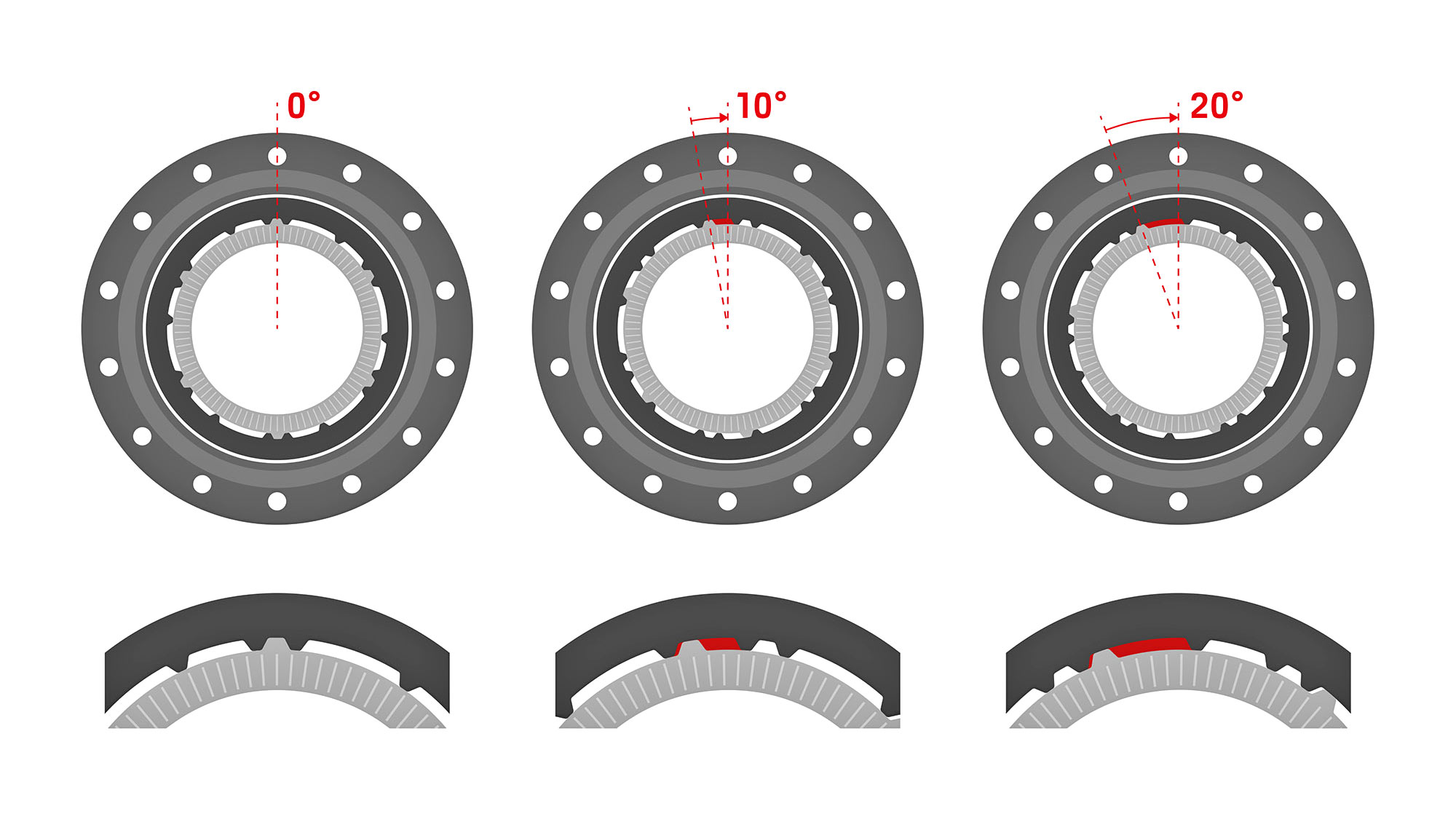
DT describes DEG DF as “easily adjustable, low maintenance and adding no weight” to let the rider tune hub engagement to how they ride.
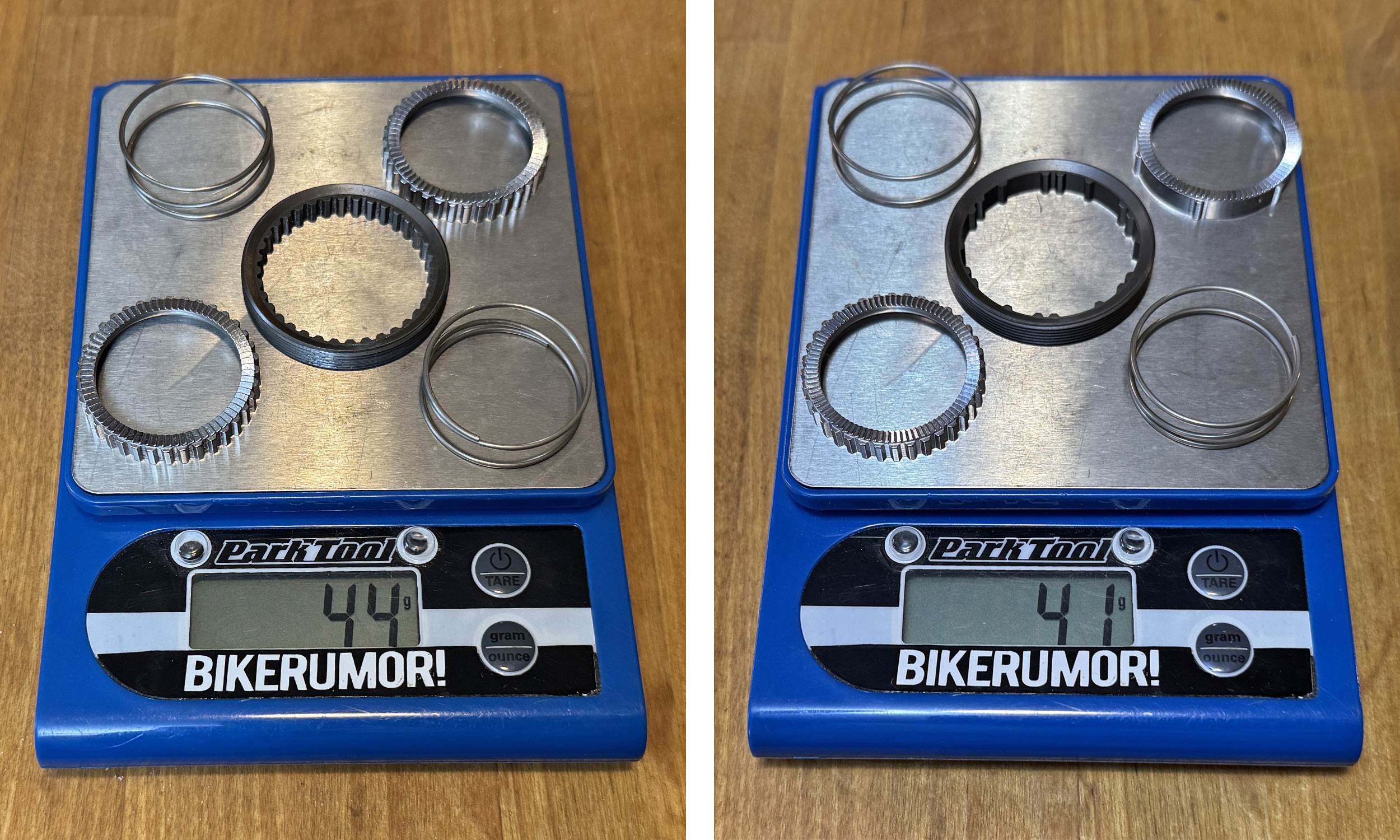
It’s literally an anti-kickback solution that saves weight, adds no extra parts, and can be easily installed as an upgrade in a lot of existing wheels. But do you even need an anti-kickback device on your bike?
Why does pedal kickback matter? And what about other active devices?

Active anti-kickback devices have blown up in recent years – fueled mostly by longer travel gravity bikes and the tiny winning margins in downhill and enduro racing.
With long travel often comes long chain growth. And that means that when you hit a bump, while standing you will feel the bike kick back on the pedals as the hub pulls the chain back. In fact, your weight on the pedals and the resulting tension in the chain prevents your suspension from moving freely, without resistance. Anti-kickback devices aim to isolate rear wheel movement from the rider (at the pedals) to allow your suspension to remain free to move.
With the goal being free suspension movement like Aaron Gwin’s legendary chainless Leogang World Cup DH win.
Ochain has been a clear leader with their device in a proprietary spider, which does require a specific install and commitment to the concept, plus adding weight and a bit of extra complexity. More recently, e*thirteen’s relatively complex Sidekick hub internals provide an easier install, but again, more weight and an extra layer of small internal pawls to keep running.
What do DEG & DF mean again?

The naming is a little tricky here, but important for compatibility, so this deserves another quick refresher. Ratchet DEG is DT Swiss’ recent introduction of faster, extra-high hub Points Of Engagement (POE) that came with an oversized Star Ratchet ring – maintaining their benchmark strength & durability. DEG signifies lower DEGgrees of hub engagement. It first launched only on special 240 DEG hubs last summer with 90 POEs, actually after getting teased as part of the 180 DEG hubs inside the XMC all-mountain or EXC enduro 1200-series carbon wheels half a year earlier. Then, DT expanded to 350 DEG hubs this past spring with 72 POEs. Every existing DEG wheelset can easily be upgraded to DF internals.
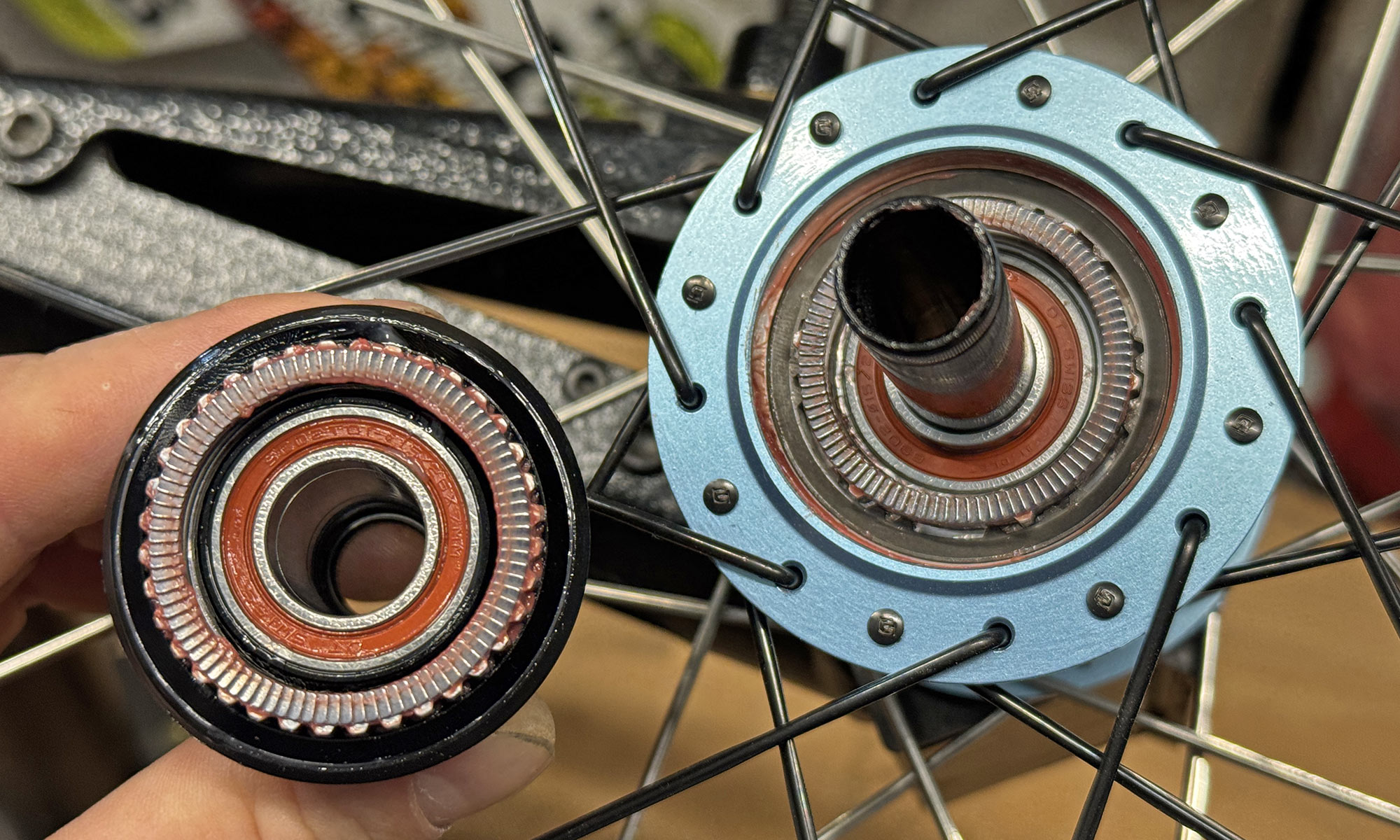
Now, DF stands for Degrees of Freedom. That is signifies the combination of fast DEG engagement with multiple, user-selectable degrees of unrestricted freehub rotation to isolate chain tension from suspension movement. So yes, DEG DF kind of stands for DEGrees Degrees of Freedom, which is clearly clunky.
But let’s just forget about that and stick with what matters, how it works. So does it matter?
Riding Impressions

From the start, I’ve been quite interested in the active anti-kickback device concept. The enduro, all-mountain, and trail bikes I typically ride do not really suffer that much from pedal kickback. And I’m either too slow or not too worried about saving seconds on my descents. But, I wanted to see if I would notice a benefit to separating drivetrain force from the suspension.
So, the simple DEG DF solution sounded great. I had a few wheelsets with DEG hubs already, since the limited edition colors dropped earlier in the year, and this was the perfect opportunity to test out anti-kickback in my local bikepark and backyard trails.

Interestingly, one of my first impressions was an increase in hub engagement noise. Many riders talk about how riding with an Ochain can quiet their bike. But, presumably the gap-toothed DT Swiss ratchet ring slaps against the DF Threadring as it engages and disengages, making extra noise. Some other systems use springs or elastomers to limit movement at either ends. But the DT movement is completely unrestricted until its stops.
As you ride standing on the pedals, the forward rotation on the rear hub constantly resets the ring in the freehub forward. And then, each pedal input disengages that connection. The sound isn’t super loud. But there is an audible ‘clack’, which actually seems to confirm everything is working as intended.

In real practice, at first, I couldn’t really tell a huge difference vs. a slower-engaging hub. And I initially did not want to ride in the 20° position anytime when I expected any uphill pedaling – or even slow technical descending where I might have to ratchet my pedals to get through chunky terrain.
But this is where DT’s DEG DF system really started to shine.
It is so easy to change settings, that I began to just flip it in the lift line after each back-to-back lap at the bikepark. The whole process is tool-free – just pull the cassette away from the hub shell, realign the gap-toothed inner DEG DF ratchet ring – and stick it back together. With practice, I could change settings in about 2 minutes. Sometimes even quicker if I got lucky with lining everything back up and not needing to fully remove the cassette.
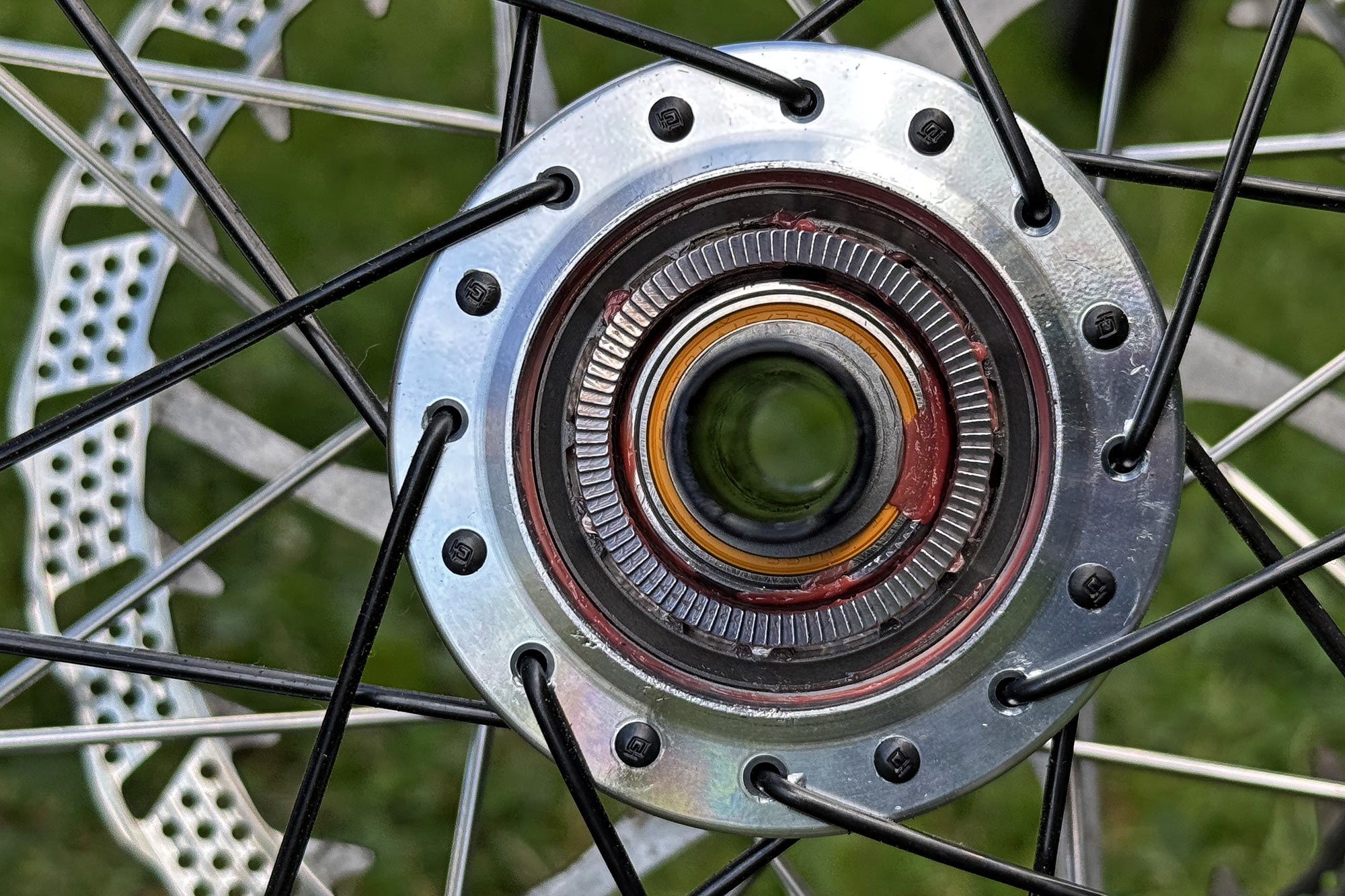
Plus, it was easy to set it back to zero for the exact same fast-engaging ride as if you didn’t have DEG DF to start with.
But does it actually help?

Ultimately, I think that I noticed an improvement in grip and suspension feel most on a fast, rooted DH track I rode several times. There, the 20° setting did seem to work well, smoothing everything out.
But honestly, for most trail riding, I settled on the middle 10° setting. A lot of times, I don’t notice that it’s there, and only when the track gets especially rough does it seem to shine. Yet, I still feel like the concept works well. It gives you more adjustability and the ability to tweak your ride feel – especially important if your bike already suffers more from pedal kickback, or if you are riding a mid-travel bike on especially fast & rough tracks.
And really, there’s no easier and cheaper way to try out an active anti-kickback device than just swapping in a new rear wheel. For example, I can swap one wheel to several bikes to see which ones it helps most – or even lend a friend a DEG DF wheel to see if active anti-kickback might reshape their riding. Extra bonus if you already have a wheel with a DEG hub, as then it’s a real no-brainer, if only to test it out for yourself.
I’m gonna keep riding with it, keep trying different settings on different trails, and on probably every bike that comes through my workshop. And I’m confident that I will continue to appreciate the tunability.
DT Swiss DEG DF – Pricing, availability & options

DEG DF is all about making the anti-kickback concept accessible to more riders to try. So, instead of launching this in any rideable product, DT is offering it first as an upgrade kit. That means, anyone with a current DT Swiss DEG rear hub – 180 DEG, 240DEG, or 350DEG – can buy this and upgrade themselves.

It honestly took me just 5 minutes to upgrade my existing 350 hub.

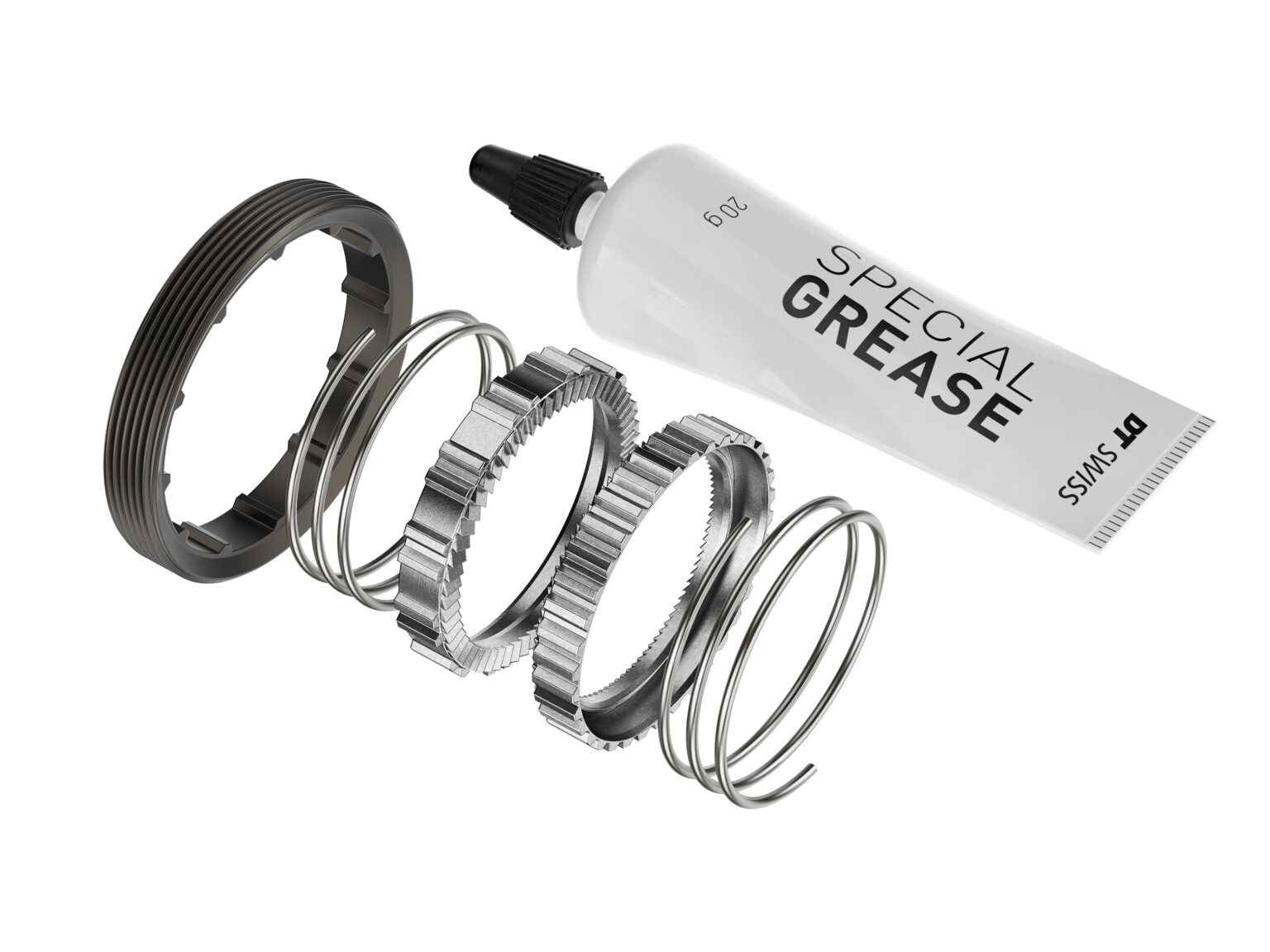
Two types of upgrade kits are available. The first are $176 / 130€ kits that include everything you need for the swap. The DEG DF Threadring, the 90 POE DEG DF Inner Ratchet, a matching 90-tooth DEG Outer Ratchet, the 2 springs, a small tube of red ratchet grease, and the special Threadring Removal Tool. Or if you have multiple hubs to upgrade, or want to have your local shop do the upgrade, a second kit without the tool is also available. (Just for comparison, upgrading your 72 POE 350 hub to the 90 POE level of 180 & 240 hubs is already 100€, making this seem like a killer deal.)

Two upgrades are offered. There’s the standard 90-tooth / 4° DEG DF with 0°/10°/20° adjustability. And an eMTB-specific DEG DF that is reduced to 60-tooth / 6° engagement and only 0°/10° adjustability to better handle higher ebike torque. DT suggests that light-assist ebikes in the 50-60Nm range could probably use the standard version. But full power ebikes over 85Nm definitely require a Hybrid hub system solution.
All DT Swiss DEG DF upgrade kits are available now, through your local dealers. And “all future DEG hubs could be equipped with DEG DF“. It sounds like this could be a standard option for new DT hub and wheel releases in the future.
